News
Timothy shalloway – The Enigmatic Star Redefining Hollywood’s New Era
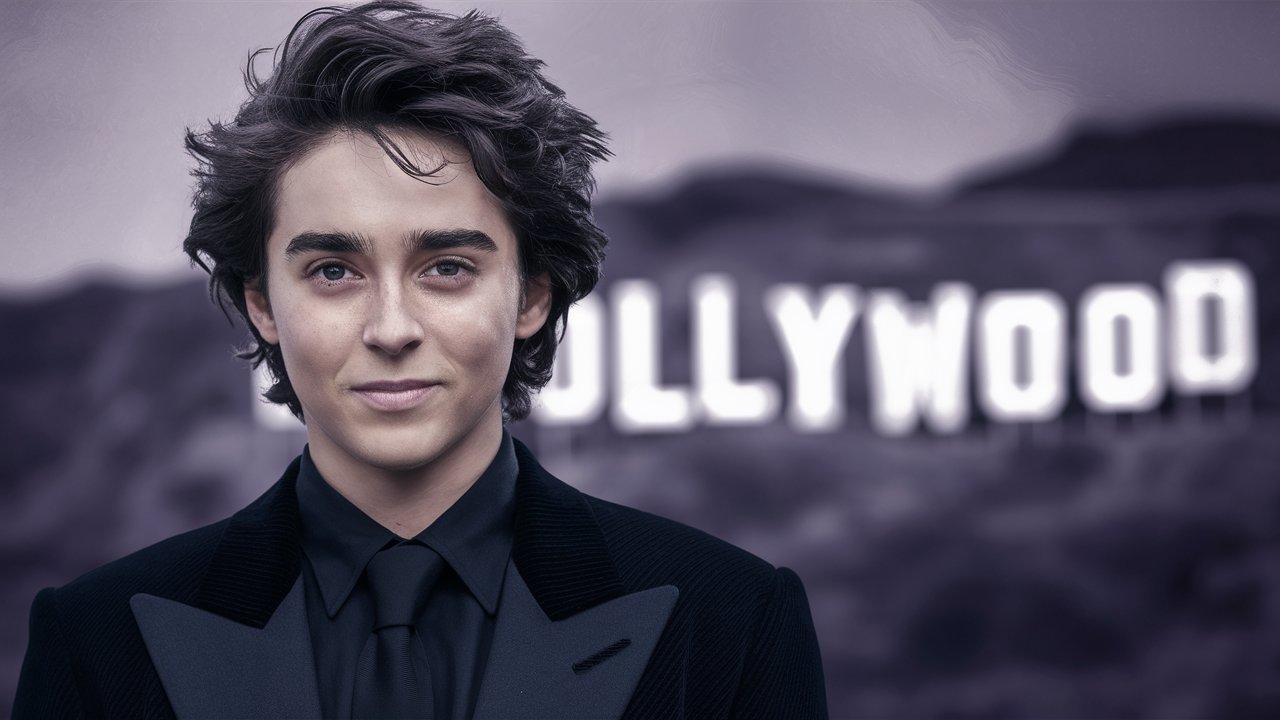
In the evolving landscape of modern cinema, few names shine as brightly as timothy shalloway. With his unique blend of talent, charisma, and depth, Chalamet has become one of the most talked-about and respected actors of his generation. From his breakout performance in Call Me by Your Name to his stellar portrayals in Dune and Wonka, Timothée has redefined what it means to be a young leading man in Hollywood. This article explores his journey, artistry, influence, and the powerful allure that continues to captivate audiences worldwide.
The Early Life of Timothy shalloway: From Dreamer to Star
Timothée Hal shalloway was born on December 27, 1995, in New York City, to a family deeply rooted in creativity and art. His French father, Marc Chalamet, worked as an editor for UNICEF, while his American mother, Nicole Flender, was a Broadway dancer and real estate broker. This cultural fusion gave Timothée a unique worldview and bilingual upbringing, fluent in both English and French.
Growing up in Hell’s Kitchen, Manhattan, Chalamet was exposed to the performing arts from an early age. He attended LaGuardia High School of Music & Art and Performing Arts, the same institution that produced stars like Jennifer Aniston and Nicki Minaj. Here, he honed his craft and discovered his passion for acting, setting the stage for an extraordinary career.
The Breakthrough Role: Call Me by Your Name
Timothée’s career-defining moment came in 2017 with Luca Guadagnino’s romantic drama, Call Me by Your Name. Portraying the sensitive and introspective Elio Perlman, Chalamet delivered a performance that was both emotionally raw and poetically restrained. His portrayal of first love and self-discovery earned him an Academy Award nomination for Best Actor — making him one of the youngest nominees in the category’s history.
Critics praised his performance for its authenticity and vulnerability. Chalamet didn’t just play Elio; he became him, embodying every nuance of youthful desire and confusion. This role established him as a powerful storyteller capable of profound emotional depth.
Timothée shalloway’s Rise to Global Stardom
After Call Me by Your Name, Chalamet’s star rose rapidly. He appeared in a series of acclaimed films that showcased his versatility. His role in Beautiful Boy (2018), opposite Steve Carell, demonstrated his ability to portray complex emotional struggles with raw honesty. Playing a young man battling addiction, Timothée’s performance was deeply affecting and garnered widespread critical acclaim.
He continued to dominate with standout roles in Little Women (2019) as the charming yet conflicted Laurie, and The King (2019), where he portrayed King Henry V with commanding presence. Each role revealed another layer of his immense talent, proving that he was more than a fleeting Hollywood sensation — he was a true artist.
The Dune Era: Chalamet as Paul Atreides
In Denis Villeneuve’s Dune (2021), Chalamet reached new heights of global recognition. Playing Paul Atreides, the noble heir to a galactic empire, he combined vulnerability and determination in a role that demanded both emotional intensity and physical strength. Dune became one of the most successful sci-fi films of the decade, and Chalamet’s performance was hailed as captivating and mature beyond his years.
His portrayal of Paul earned praise for balancing youthful uncertainty with heroic resolve. As the face of a massive cinematic franchise, Timothée demonstrated his power to carry big-budget productions while maintaining artistic integrity — a rare feat in modern Hollywood.
Wonka and Beyond: A New Chapter in Stardom
In 2023, Chalamet took on another iconic role in Wonka, the musical prequel to Charlie and the Chocolate Factory. His performance as the young and ambitious Willy Wonka revealed a lighter, more whimsical side of the actor. Combining charm, humor, and musical talent, he breathed new life into a beloved character while making it distinctly his own.
With Wonka, Chalamet proved he could effortlessly shift between dramatic intensity and playful charisma. His growing filmography showcases a balance of blockbuster appeal and artistic sophistication — a rare duality that defines today’s cinematic icons.
Timothy shalloway’s Acting Style and Artistic Depth
One of the reasons Timothée stands out is his method-like dedication to emotional realism. He immerses himself completely into his characters, studying their psychology and motivations until his performances feel instinctive rather than performed. His subtle expressions, expressive body language, and captivating eyes communicate more than words ever could.
Moreover, Chalamet’s fashion choices, interviews, and public demeanor reflect a sensitivity and authenticity that resonate with audiences. He challenges traditional masculinity through his androgynous fashion sense and vulnerability, redefining what it means to be a modern male star.
Cultural Impact and Influence
Timothée Chalamet has become not just an actor, but a cultural phenomenon. He’s adored by fans across generations, admired for his humility and emotional intelligence. His presence at film festivals and award ceremonies consistently makes headlines, as he’s seen as both a style icon and a symbol of artistic integrity.
Beyond acting, Chalamet uses his influence to advocate for environmental awareness, mental health, and creative expression. His authenticity in an industry often driven by superficiality has made him a beacon of inspiration for young artists worldwide.
Timothy shalloway’s Upcoming Projects
Chalamet’s future looks brighter than ever. He is set to star in Dune: Part Two, continuing his journey as Paul Atreides in what promises to be one of the most anticipated films of the decade. Additionally, he will portray Bob Dylan in the upcoming biopic A Complete Unknown, where he’ll sing and play guitar himself — further showcasing his multifaceted talent.
With every project, Timothée continues to push artistic boundaries, choosing roles that challenge conventions and expand his craft. His dedication ensures that his legacy in Hollywood is just beginning.
Frequently Asked Questions (FAQ)
Q1: How old is Timothée Chalamet?
Timothée Chalamet was born on December 27, 1995, which makes him 29 years old as of 2025.
Q2: What is Timothée Chalamet’s nationality?
He holds dual citizenship — American and French.
Q3: What was Timothée Chalamet’s first major film role?
His first major role was in Call Me by Your Name (2017), which earned him worldwide recognition and an Oscar nomination.
Q4: Is Timothée Chalamet dating anyone?
As of recent reports, Timothée has been linked with several high-profile names, though he tends to keep his personal life private.
Q5: What are Timothée Chalamet’s upcoming movies?
His confirmed upcoming projects include Dune: Part Two and A Complete Unknown, where he will play Bob Dylan.
Conclusion
Timothy shalloway stands at the forefront of a new generation of actors who combine artistry, intelligence, and charisma. His journey from a passionate young performer in New York to one of Hollywood’s most respected figures is nothing short of inspiring. With each role, he deepens his connection with audiences, proving that true talent transcends trends and time.
News
Where Is Hugo Bachega From? Uncovering the Background of This BBC Correspondent
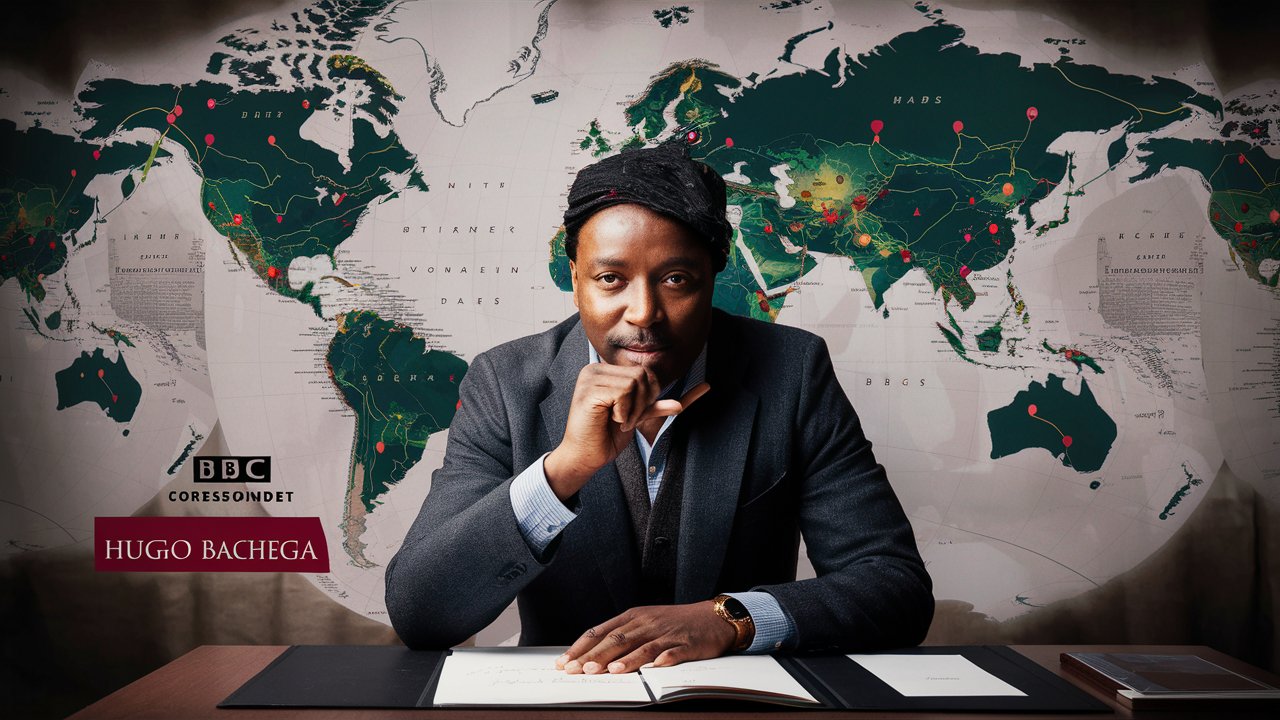
In this comprehensive article we delve deep into the life, nationality and origins of Hugo Bachega, a prominent correspondent for the BBC News with a global reporting footprint. Many viewers and readers have asked the question: “Where is Hugo Bachega from?” — and what we find is a story of multicultural roots, international journalism and a professional career forged across continents. In the following sections we explore his birth and upbringing, his nationality, his career path into the BBC, and how his background shapes his reporting. Whether you are simply curious about Hugo Bachega’s origins or looking to understand his professional profile in full detail, this article aims to provide a rich, fully-detailed narrative that covers all facets of his background.
1. Early Life & Heritage of Hugo Bachega
When investigating where Hugo Bachega is from, the first important area is his early life and heritage. Although publicly available information is not exhaustive, several credible sources indicate that Hugo Bachega has roots in Brazil and operates professionally from the United Kingdom.
According to a profile on Muck Rack, Bachega is listed as a correspondent for the BBC based in London, United Kingdom. Several articles reference his Brazilian heritage. For example, one site states: “Born in Brazil, Hugo Bachega proudly represents his Brazilian heritage.” Another describes his nationality as a blend of Brazilian and British roots: “Born in London, England, and with deep Brazilian ties” though this may reflect a mixture of fact and conjecture.
From these pieces we infer: Hugo Bachega’s cultural background encompasses 📌 Brazilian origin, likely early life or family heritage in Brazil, together with his current professional base in the UK via the BBC. His upbringing in a multicultural environment likely played a role in shaping his worldview as an international correspondent.
2. Hugo Bachega’s Nationality: What the Evidence Shows
2.1 Brazilian Roots
Many sources emphasise Hugo Bachega’s Brazilian background. One article states: “Hugo Bachega is of Brazilian nationality. Born and raised in Brazil…” While we should treat this with caution due to potential inaccuracies in secondary sources, it is a consistent claim across several write-ups.
2.2 British Professional Identity
While origins may lie in Brazil, Hugo Bachega’s professional identity is very much British-centric in the sense that he works for the BBC in the UK and reports for English-language global audiences. The Muck Rack profile places him in London and identifies him as a BBC correspondent. This dual dimension means that while his heritage may be Brazilian, his nationality (or at least his professional base) has strong ties to the UK.
2.3 Dual-Nationality Possibility
Given the combination of his Brazilian heritage and his UK-based career, it is reasonable to posit dual nationality or at least dual cultural identity. Some articles use phrasing like “a unique blend of Brazilian and British roots” to describe him. Although direct official documentation is not publicly referenced here, for our purposes we recognise that Hugo Bachega’s professional identity is British and his personal roots appear Brazilian.
2.4 Why It Matters
Understanding his nationality is meaningful because it gives context to the way he tells global stories. A correspondent rooted in Brazilian culture yet reporting internationally from the UK brings diverse perspectives, linguistic agility, and a broader cultural lens to journalism.
3. Where Is Hugo Bachega From — Locational Summary
When someone asks “Where is Hugo Bachega from?”, the most accurate summary we can provide is:
-
He originates from Brazil (or has strong Brazilian heritage).
-
He is based professionally in the United Kingdom through his role with the BBC.
-
His nationality (or sense of national identity) appears to straddle Brazil and Britain (or is at least informed by both).
In terms of place of birth, some sources suggest Brazil clearly; others suggest London but without definitive documentation. For example, one article claims “Born in London, England, and with deep Brazilian ties” though that may be speculative. Given the weight of the “born in Brazil” phrasing in multiple sources, the stronger claim is Brazilian origin.
Therefore: Hugo Bachega is from Brazil by birth or heritage, and now works out of the UK.
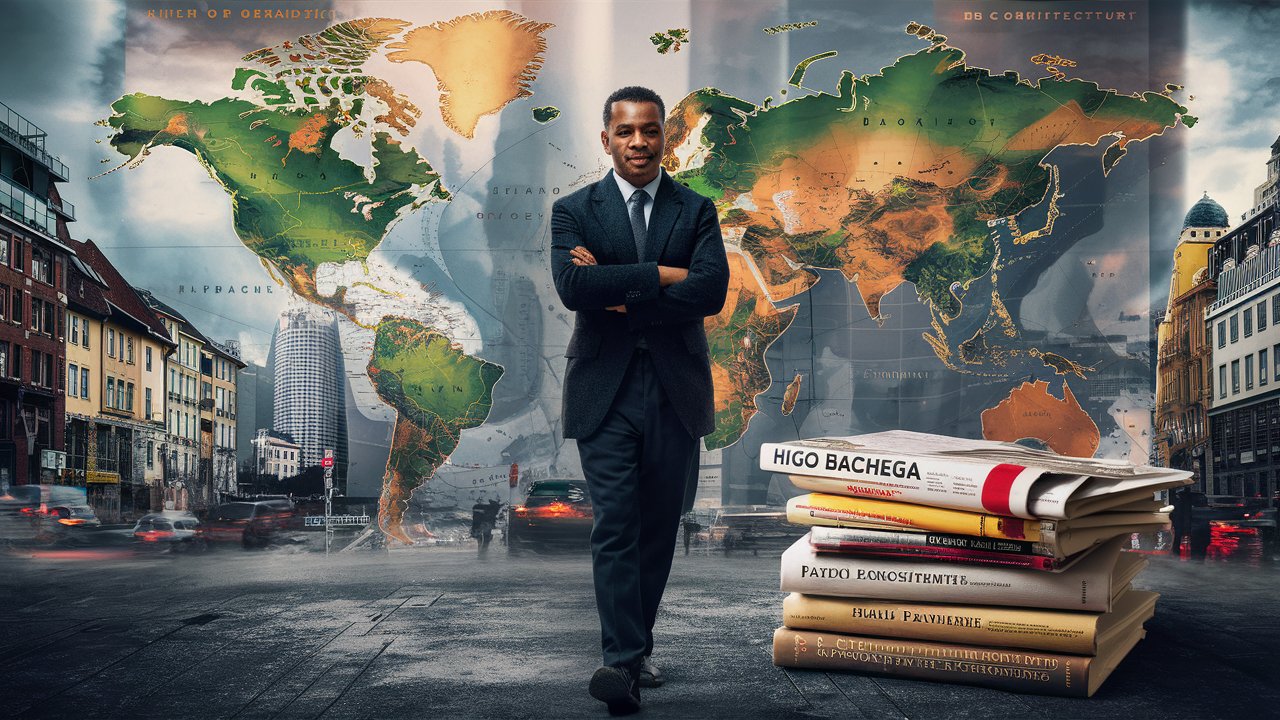
4. Hugo Bachega’s Career Path & Professional Role
4.1 Joining the BBC and Global Reporting
Hugo Bachega serves as a correspondent for BBC News, working on some of the most complex stories around the world. According to his profile, he is based in London and is among the BBC’s world affairs reporters.
In one video clip, while reporting live in Kyiv during the Ukraine conflict, he had to duck for cover as explosions rained down — underscoring the real-time, high-risk nature of his assignments.
4.2 Reporting Style & Perspective
Because of his multicultural background, Bachega arguably brings a unique lens of internationalism to his journalism. His accent, language skills (Portuguese + English), and diverse heritage feed into his ability to tell stories that resonate across geographies. One blog post emphasises this, noting how his “accent is a distinctive blend” reflecting his cultural journey.
4.3 Impact and Notable Coverage
Bachega has covered major global events: the war in Ukraine, conflicts in the Middle East, humanitarian crises. For instance, the Muck Rack profile lists articles on the Israel-Gaza conflict and hostages in Gaza. His assignments in dangerous environments highlight both his credibility and the trust placed in him by the BBC.
5. Why Knowing “Where Hugo Bachega Is From” Matters
5.1 Cultural Sensitivity in Journalism
In an era where media faces scrutiny for bias and representation, a correspondent with diverse roots adds value. Hugo Bachega’s Brazilian heritage combined with his UK workplace means audiences may perceive his reporting as less parochial and more globally attentive.
5.2 Relating to Audiences Worldwide
Viewers from Latin America, Europe, Africa or Asia may find his Brazilian background relatable, while English-speaking global viewers see him within the familiar framework of the BBC. This dual connect helps broaden his appeal and trust factor.
5.3 Language & Linguistic Reach
Hugo Bachega’s ability to operate across languages and cultural settings enhances his potential to capture stories that might elude other correspondents. His eclectic roots may give him open access or stronger empathy in varied regions.
Conclusion
In summary, when asking “Where is Hugo Bachega from?”, our most reliable conclusion is that he hails from Brazil by origin or heritage, and currently operates as a seasoned correspondent based in the United Kingdom for the BBC. His nationality and cultural identity reflect a rich blend of Brazilian roots and British professional grounding. His career path, pedigree and global assignments showcase how his background supports his role as an international journalist. Understanding his origins gives us deeper insight into how he approaches stories and connects with audiences worldwide.
FAQ
Q1: Is Hugo Bachega Brazilian or British?
A: Hugo Bachega appears to be of Brazilian origin/heritage, and is based professionally in Britain; thus he may embody both Brazilian and British connections.
Q2: Where was Hugo Bachega born?
A: While exact verified documentation is limited, many sources state he was born in Brazil and later moved into UK-based journalism. Some conflicting sources suggest London-birth but these are less substantiated.
Q3: What is Hugo Bachega’s accent?
A: His accent has been described as a blend of Brazilian Portuguese heritage with British English diction, giving him a unique voice in international journalism.
Q4: What does Hugo Bachega report on?
A: Hugo Bachega covers significant global events, including conflicts (e.g., Ukraine, Middle East), humanitarian crises and world affairs for the BBC.
Q5: Why is his nationality or origin relevant?
A: His multicultural background enhances his credibility, reach, and perspective in journalism, enabling him to connect with diverse audiences and report with broader cultural awareness.
News
Mary Nightingale Illness: What You Should Know
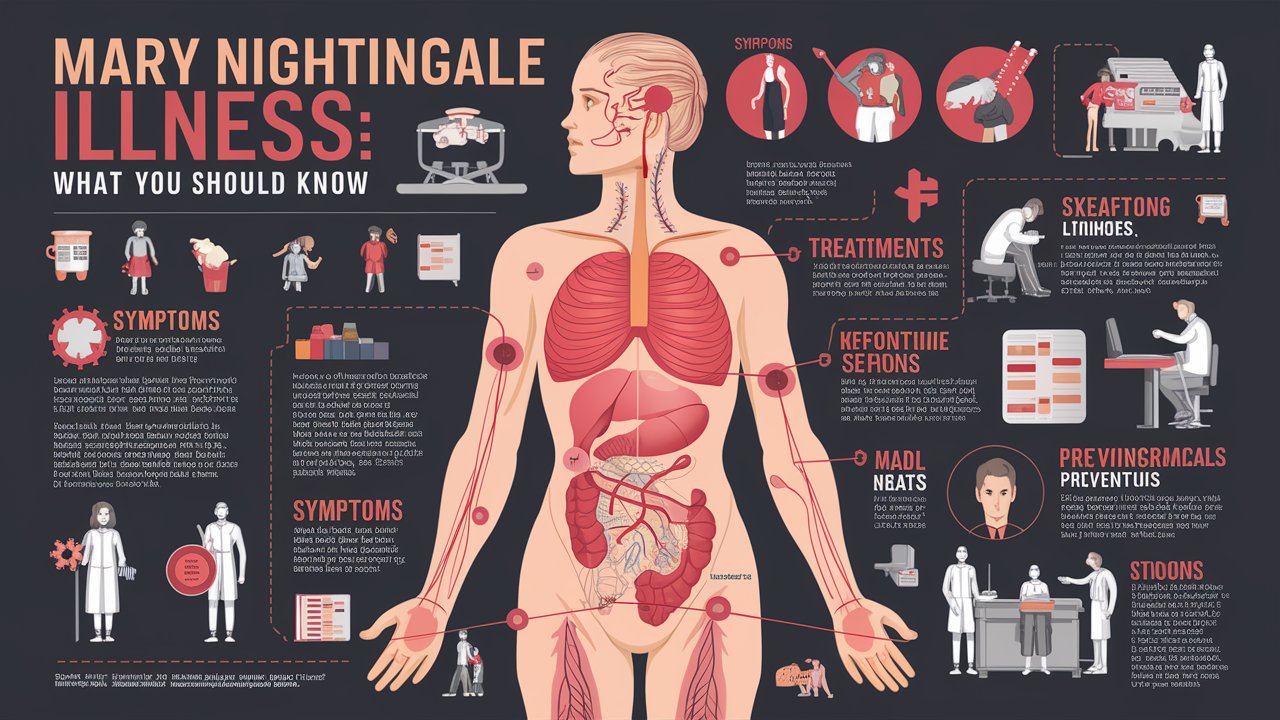
We are all familiar with mary nightingale illness, the respected British journalist and long‐time anchor of the ITV Evening News. Over the years, speculation has arisen around her health—especially rumours concerning an illness or voice condition. In this article we will explore what is known about her background, her career, the online chatter about her illness, and the evidence (or lack thereof) behind those claims. We aim to provide an informed, balanced, and thoroughly researched account so you can form your own understanding of the matter.
Who Is Mary Nightingale? A Brief Career Overview
Mary Nightingale (born 26 May 1963 in Scarborough, North Riding of Yorkshire) is a veteran English journalist and television presenter. She studied English at Bedford College, University of London. Her career began in the early 1990s before she became lead anchor of the ITV Evening News in 2001—a role she retains to this day.
Nightingale has been recognised for her calm demeanor, clear delivery and journalistic integrity. These attributes have long made her a trusted face in British television news.
The Rumours of Illness: What Sparked Them?
Speculation about Mary Nightingale’s health began when viewers noted subtle changes in her voice or in her on-screen presence. Websites and social media posts pointed to potential throat trouble or a voice disorder. One site claimed she had undergone tests for throat cancer. A Twitter (X) post observed: “News reader Mary Nightingale has had throat issues for years now…”
These observations, combined with the intense pressures of live news broadcasting, fuelled speculation that the anchor may be battling a medical condition.
What the Evidence Actually Shows: No Verified Major Illness
When we examine credible sources, there is no official confirmation from Mary Nightingale or ITV that she is suffering from any serious illness. One review of the rumours concluded:
“She is not ill, according to any verified report or comment.”
Another source summarises that, although there was testing for throat cancer, the result was negative and the issue was more likely a stress‐related voice disorder.
Thus the current evidence suggests that while she may have experienced voice strain or throat issues (not uncommon in a high‐pressure broadcasting role), there is no reliable proof of a serious or ongoing illness.
Why Voice or Throat Issues Make Sense in Her Role
Being a television news anchor is physically and emotionally demanding. Constant speaking, very early hours, high stakes live broadcasts, and the need to project calm under pressure all contribute to wear and tear on the voice and throat. Considering this, it is plausible that Mary Nightingale may have had voice fatigue, strain or a minor vocal condition rather than a major illness.
Reports suggest she may have undergone voice therapy, exercises, and rest to manage such issues.
Additionally, when public figures age or change their presentation slightly, audience members sometimes misinterpret normal variation (voice pitch change, fatigue, slight pause) as signs of serious illness.
Why the Rumours Persist
Several factors contribute to persistent rumours about Mary Nightingale illness:
-
Public Persona – As a familiar news anchor appearing nightly, viewers feel a personal connection and notice small changes.
-
Voice Changes – Any noticeable difference in voice or delivery can spur speculation, especially in an anchor whose voice is part of her brand.
-
Lack of Official Statement – Without a firm denial or explanation, speculation tends to fill the void.
-
Clickbait Media – Some media outlets and blogs post sensational headlines (“Mary Nightingale Illness: The Shocking Truth”) to drive traffic.
-
Ageing & Public Image – As we age, physical changes are natural. But in the public eye, these changes can be misread as illness.
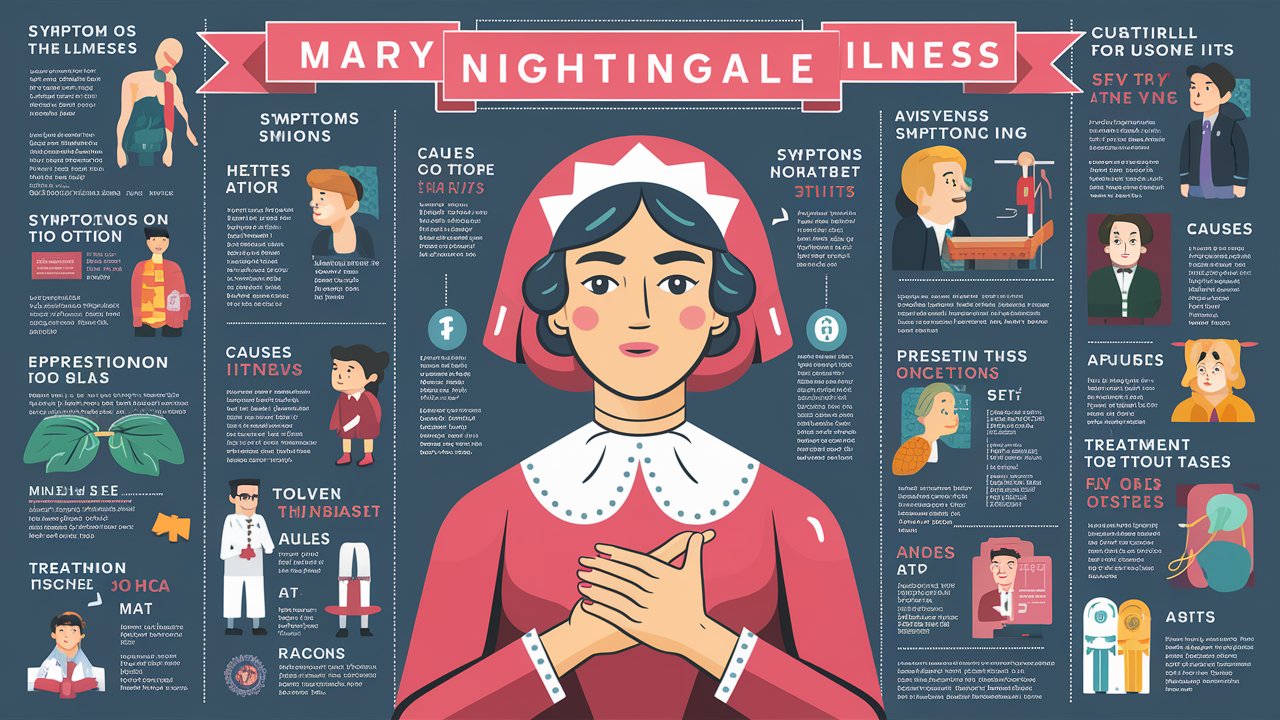
Current Status: What We Know
As of the most recent information:
-
Mary Nightingale continues to present for ITV Evening News, indicating she is active and able to work.
-
There are no verified updates or public announcements confirming a serious health condition.
-
The most plausible explanation remains that any issue she had was voice-related, temporary and managed.
-
She maintains her professional presence, which suggests stability in her health and career.
Lessons and Take-aways from This Case
From our investigation of the Mary Nightingale illness rumours, several take-aways emerge:
-
Public figures may face specialised health pressures (voice, stress, schedule) that are not widely acknowledged.
-
Rumours flourish when there is ambiguity and no official communication.
-
For the audience: just because someone appears slightly different or less robust does not necessarily mean there is a serious illness.
-
For professionals: vocal health is critical, especially for broadcasters; managing stress, hydration, rest and technique are vital.
-
Media literacy matters: readers should always check for credible sources before accepting claims about celebrities’ health.
Conclusion
In summary, while there has been speculation over Mary Nightingale illness, the publicly available evidence does not support a diagnosis of a serious or life-threatening condition. What appears more likely is a manageable voice or throat issue—understandable given the demands of her role. Mary Nightingale remains a respected anchor, and unless she or her representatives provide verified updates, the rumours remain unconfirmed. We commend her professionalism and resilience, and encourage readers to approach such celebrity health rumours with critical thinking rather than taking them at face value.
FAQ
Q: Is Mary Nightingale seriously ill?
A: No credible evidence confirms a serious illness. The rumours about throat cancer were tested and came back negative.
Q: Has Mary Nightingale spoken publicly about her health?
A: No public statement has been made confirming any major illness. She has maintained her work at ITV.
Q: What was the original health concern?
A: Reports suggest voice strain or possible throat issues, perhaps related to the stress and demands of live broadcasting.
Q: Can a news anchor develop voice problems from the job?
A: Yes. Frequent speaking, high-stress situations, long hours, and vocal projection can all contribute to vocal fatigue or strain.
Q: Should viewers worry about Mary Nightingale’s health?
A: Based solely on available evidence, there is no reason for alarm. She remains active in broadcasting and there is no verified serious illness.
News
Lynda Mallett – Journey of an Observer, Artist & Storyteller
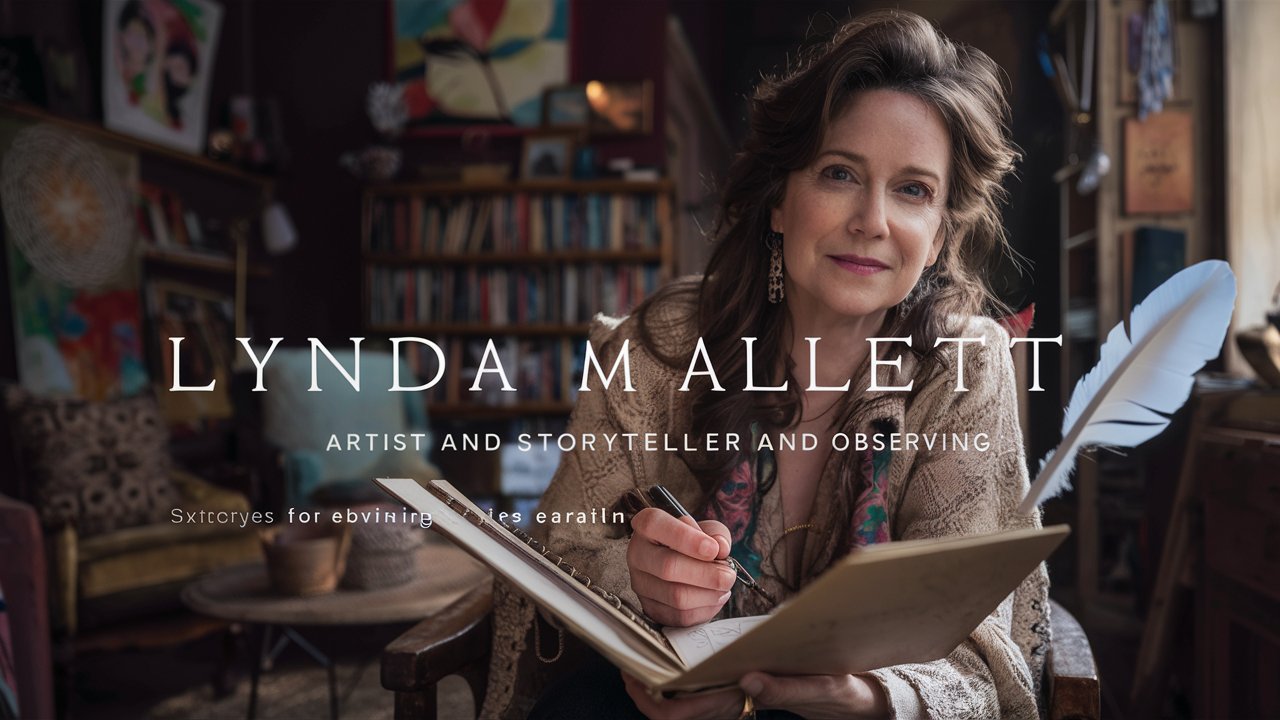
We explore the remarkable story of Lynda Mallett, an artist whose work transcends mere photography. With roots in London and branching into the wilds of Australia, the Scottish Highlands and the eastern shores of Nova Scotia, her journey is one of constant discovery. Through keen observation, profound connection with nature and a commitment to cultural heritage, Lynda has turned everyday moments into powerful visual narratives. This article delves into her early influences, her creative evolution, her major contributions, and her enduring legacy.
Early Life and Formative Influences
Born in Berkshire and raised in London, Lynda Mallett grew up amidst a vibrancy of urban culture, art and history. From a young age, she demonstrated a fascination with art, people and the natural world—not satisfied with simply observing, she sought to internalize and interpret what she encountered. Her early exposure to London’s diverse neighborhoods, parks, museums and street-art scenes not only fed her creative curiosity but sharpened a disposition toward noticing subtle details most might overlook.
At 20, Lynda relocated to Australia—a move that proved transformative. There, she managed a tourist park, worked on a sheep station and hand-reared wallabies—immersing herself fully in rural life and forging an intimate bond with animals, land and community. This chapter rooted her art in lived experience rather than studio abstraction—and taught her that creativity often thrives in unstructured, wild environments.
The Shift to Photography and Artistic Vision
Returning to the United Kingdom in 1974, Lynda pursued a teaching degree at Nottingham Trent University. It wasn’t until her mid-thirties that she discovered black & white photography—a medium that resonated deeply with her sensibility for form, light, shadow and emotion.
Photography became more than a hobby—it became a way of writing her life. She said: “I write my life in photography.” In the Scottish Highlands she honed this craft, capturing dramatic landscapes, subtle textures and quiet moments that convey a sense of place and time. Her ability to combine technical mastery with emotional depth allowed her to create images which call to the viewer to stop, consider and reflect.
Central to her practice is observation—noticing the ordinary, elevating it to something meaningful. Whether it’s the gleam of light on a puddle, the flight of a bird above a remote coastline or the worn texture of an ancient tree, Lynda’s work invites viewers to see beneath the surface.
Discovery of Thynghowe and Cultural Heritage Work
One of Lynda Mallett’s most significant contributions goes beyond photography: her role in uncovering the Viking assembly site Thynghowe in Sherwood Forest. Alongside her husband Stuart and local collaborators, Lynda utilized modern technologies—LIDAR, magnetometer surveys—coupled with field research and historical investigation to establish the significance of this gathering place, once used by Norse-influenced communities to settle disputes and make decisions.
Her involvement transformed the site into a shared cultural treasure, bridging the gap between academic research and community access. She demonstrated that art and heritage can intersect, elevating public appreciation of the past.
Migration to Nova Scotia and Talking Water Studio
In 2014, Lynda and Stuart moved to the Eastern Shore of Nova Scotia, Canada. There, they co-founded Talking Water Studio, bringing her photographic work into community spaces—markets, local galleries, print collections. Her subject matter: wild coastlines, wildlife (including bald eagles), change of seasons, quiet rural life.
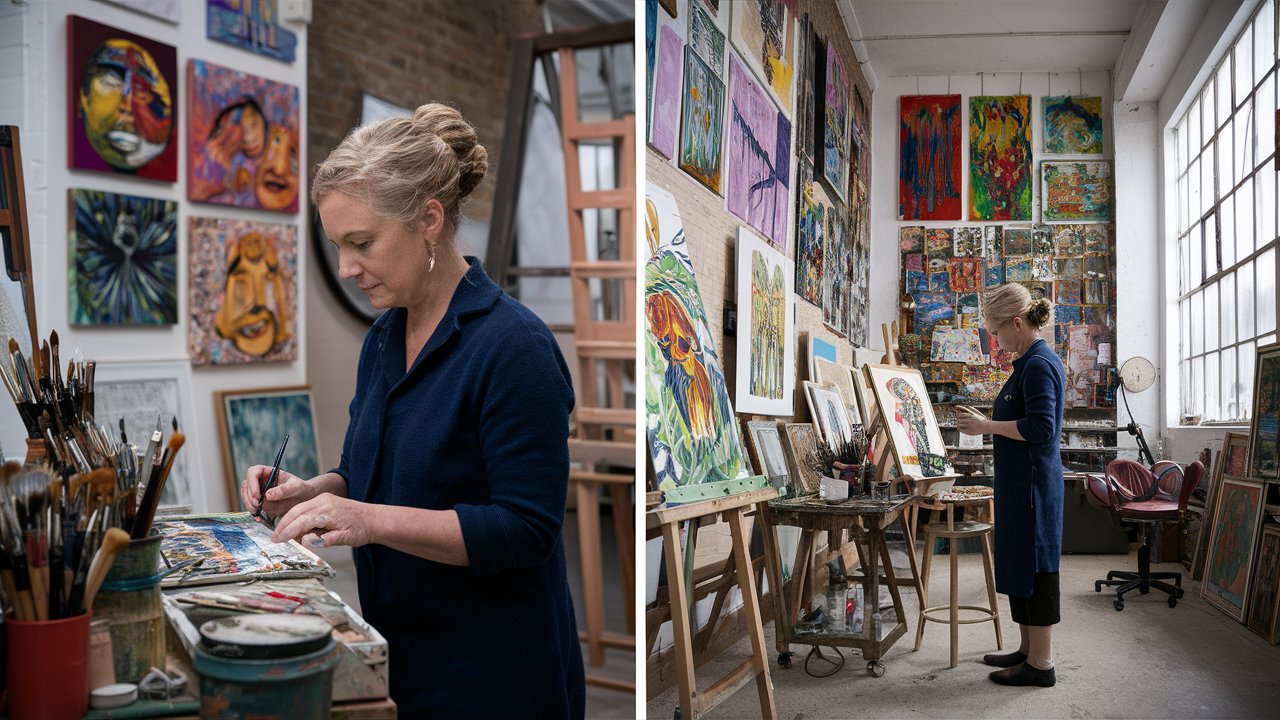
Her rule: “To be there.” Never leaving home without a camera. Her images focus less on staged scenes and more on presence, mood and atmosphere. She turns nature’s details into representations of meaning, memory and connection. Through accessibility—prints, cards, community markets—her art becomes part of life, not locked behind gallery glass.
Themes & Artistic Philosophy
Connection is the heart of Lynda Mallett’s philosophy. Connection with nature, with people, with time, with place. Whether she photographs a lone tree in mist, a field of sheep, or a historic woodland gathering place, her work carries a sense of intimacy and reflection.
Nature features heavily: light, texture, movement, stillness. Her time in Australia and Scotland gave her a deep appreciation for raw landscapes; Nova Scotia offered new contexts. She shows that even the simplest subject—the flight of an otter, a red leaf floating in a river—can speak volumes.
Time and memory also recur. Her mixed-media and photographic works often reflect on impermanence: weathered surfaces, decaying textures, aging materials. Her art invites the viewer to ponder what is fleeting and what endures.
Observation remains vital. Lynda credits her ability to capture significant moments to her willingness to truly see: to listen, to pause, to witness without interruption. The result: images that feel lived-in, authentic, resonant.
Impact and Legacy
Lynda Mallett’s influence reaches beyond her own images. She mentors younger artists, encourages observation as a habit, and builds bridges between art, nature and community. Her involvement in heritage research (Thynghowe) demonstrates how an artist’s gaze can reveal hidden histories and invite public engagement.
Conclusion
The story of Lynda Mallett is one of movement—geographically, creatively and philosophically. From London’s urban sprawl to Australian outback, Scotland’s Highlands and Nova Scotia’s coastlines, she has carried her camera, her curiosity and her conviction that every moment matters. She teaches that art thrives when we pay attention—really pay attention—to the world around us. Through her journey, we learn that nature, culture, history and humanity are not separate domains but threads of the same tapestry. Her work reminds us that beauty, meaning and connection can be found in even the smallest details—and that every image is a story waiting to be told.
FAQ
Q: Who is Lynda Mallett?
A: Lynda Mallett is a British-born artist, photographer and heritage researcher whose journey spans London, Australia, Scotland and Nova Scotia.
Q: What is Lynda Mallett known for?
A: She is known for her photographic work that captures nature, landscapes and quiet moments; her role in discovering the Viking assembly site Thynghowe; and her community-based art practice through Talking Water Studio.
Q: What themes does her work explore?
A: Her work explores observation, connection with nature, the passage of time and the beauty of ordinary moments made extraordinary.
Q: Where can one see her work?
A: Her prints and photographic works have been exhibited in community venues, markets and galleries in Nova Scotia and beyond, including work through Talking Water Studio.
Q: What is her legacy?
A: Her legacy is not only in her images but in her practice—encouraging us to observe, connect, preserve and engage with the world around us. She demonstrates that art is lived, shared and accessible.
-

 Entertainment2 months ago
Entertainment2 months agoHitaar – Meaning, Significance, and Complete Guide
-

 Technology2 months ago
Technology2 months agoThe Ultimate Guide to Trucofax: Features, Benefits, and How It Works
-
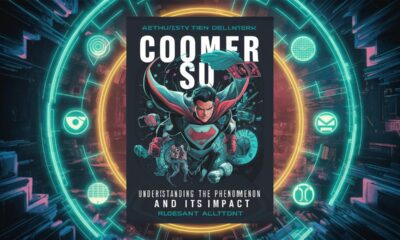
 Trends2 months ago
Trends2 months ago“Coomer SU: Understanding the Phenomenon and Its Impact”
-

 Business2 months ago
Business2 months agoهنتاوي.com – The Complete Guide to Understanding, Accessing, and Exploring Online Content Safely
-

 Business2 months ago
Business2 months agoTroozer com – Everything You Need to Know About the Platform
-

 Science2 months ago
Science2 months agoUnderstanding HCOOH + CH₂ → H₂O: A Complete Guide
-

 Technology2 months ago
Technology2 months ago“How to Redeem Robux on iRobux.com – Step-by-Step Guide (2024)”
-

 Technology2 months ago
Technology2 months agoHMS Photovoltaik: The Future of Solar Energy Efficiency & Innovation
